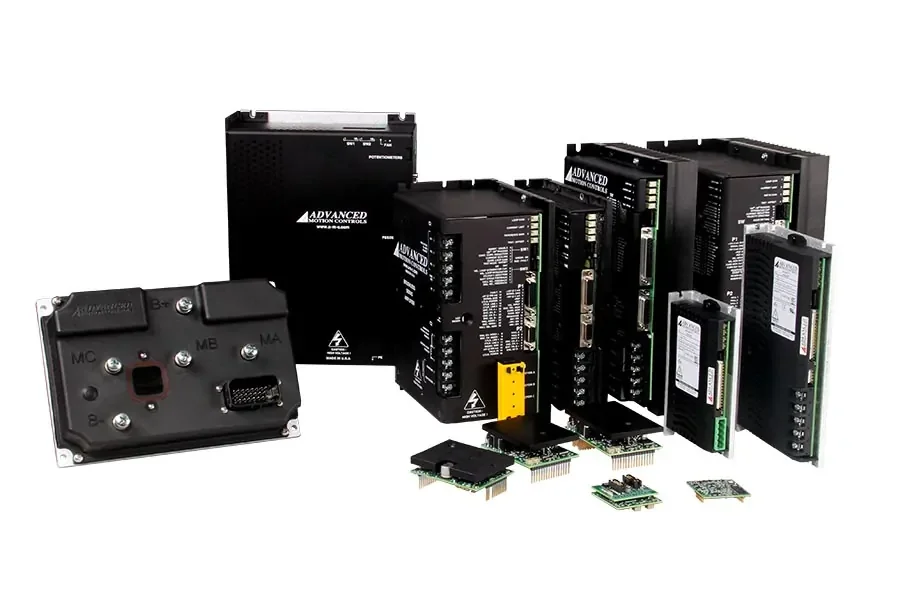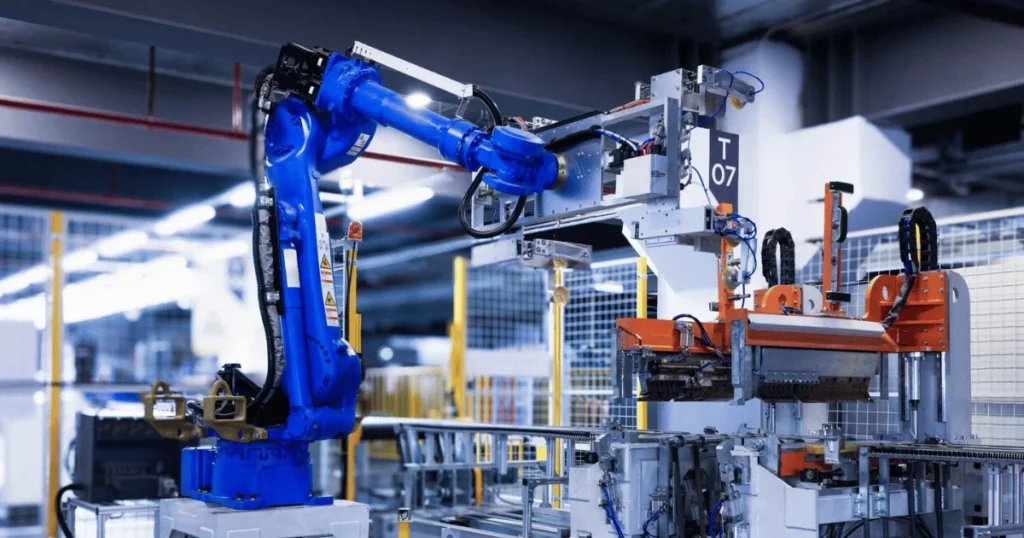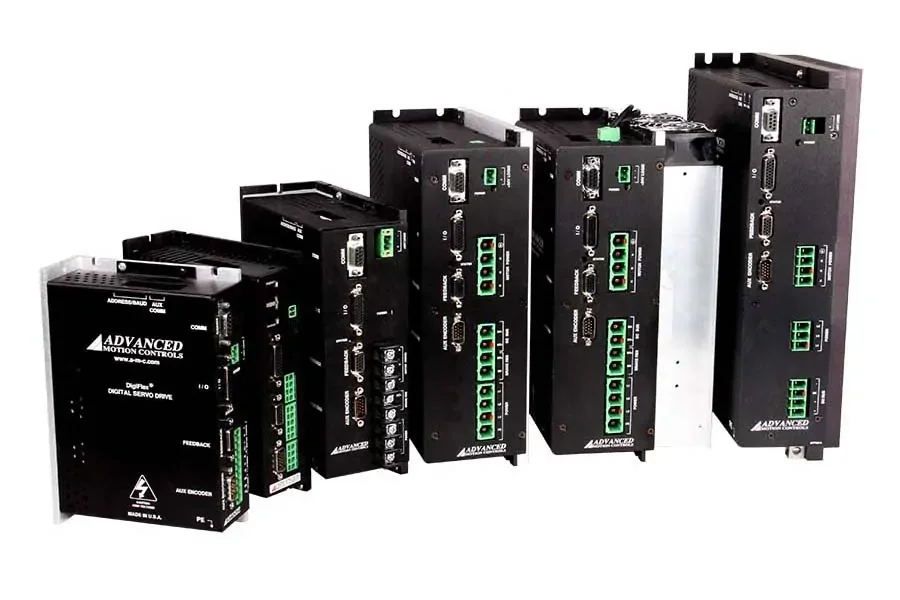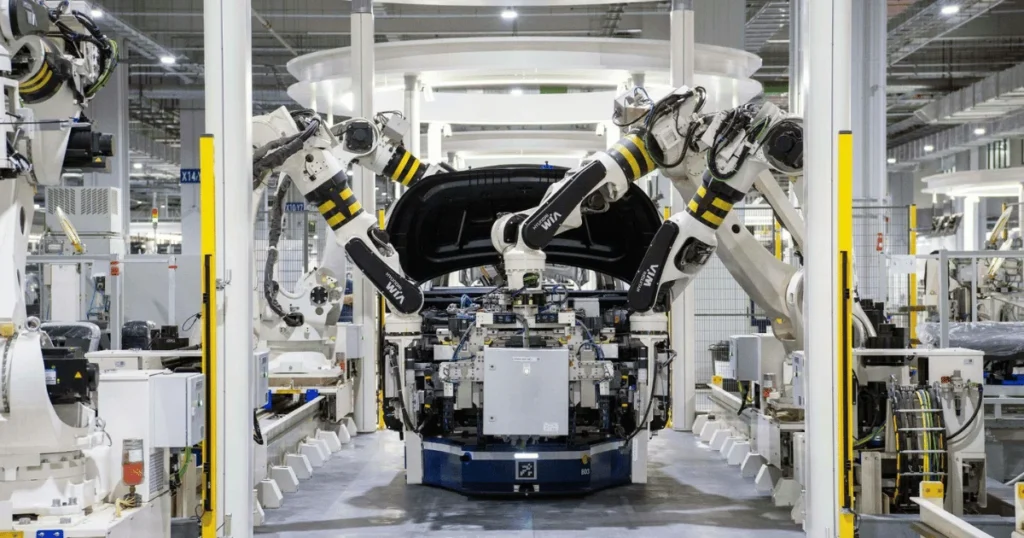Robots used to be blind brutes—strong, repetitive, and locked in cages. Not anymore. As industrial robotics evolves, speed and precision are no longer a luxury—they’re mandatory. At the heart of this transformation is a quietly powerful component: the servo drive.
Whether it’s a robotic welder on an automotive line or a micro-soldering arm in an electronics lab, ADVANCED Motion Control Servo Drives are the difference between clunky automation and intelligent movement. As manufacturers chase tighter tolerances, real-time adaptability, and Industry 4.0 integration, AMC Servo Drives are leading the charge.
What Is a Servo Drive and Why Does It Matter in Industrial Robotics?
A servo drive is an electronic device that receives a command signal and adjusts the movement of a motor to match that instruction with high precision. Unlike basic motor drivers or variable frequency drives (VFDs), which provide general speed control, servo drives maintain continuous feedback loops to adjust torque, velocity, and position in real time.
This feedback-driven architecture allows servo drives to support robotic systems that demand high repeatability and tight tolerances. In simpler terms, they turn a robot from a machine that moves into one that knows where it’s moving and how fast.
In modern robotic motion control, servo drives enable smoother paths, faster adjustments, and coordinated movement across multiple axes. They’re essential for making robots both accurate and responsive.
How Do Servo Drives Work in Robotic Systems?
Servo drives work through a closed-loop control system. They actively monitor motor signals to optimize and refine movement control. Here’s a simplified breakdown:
- The robot controller sends a command to the servo drive.
- The servo drive interprets the command and delivers power to the motor.
- Sensors (usually encoders or resolvers) send feedback on position, velocity, and sometimes torque.
- The servo drive compares this feedback with the command and makes continuous adjustments.
Main components in the control loop:
- Feedback sensor – Measures actual position, speed, or torque of the motor
- Servo amplifier – Boosts control signals to the necessary motor-driving voltage/current
- Control algorithm (PID, etc.) – Calculates the difference between commanded and actual values and adjusts motor input accordingly
- Motor interface – Executes the physical movement
- Load dynamics – The mechanical system or tool attached to the motor, which introduces inertia and external forces
Exploring the Different Servo Drives in Industrial Robot Systems

Different applications call for different servo technologies. Here’s a look at the main types:
AC Servo Drives
- Pros: High torque, suitable for dynamic applications
- Cons: May require more complex tuning and shielding
DC Servo Drives
- Pros: Simple architecture, smooth speed control
- Cons: Lower torque, more maintenance due to brushes
Linear Servo Drives
- Pros: Direct linear motion, high precision
- Cons: Increased cost, narrower field of application
Digital vs. Analog Servo Drives
- Digital: More configurable, better diagnostics, easier integration
- Analog: Lower latency, but lacks flexibility and Industry 4.0 compatibility
Integrated Servo Drives
- Pros: Motor and drive in one unit, compact footprint
- Cons: Can be harder to service or upgrade separately
What Are the Main Components of a Servo Drive System in Robotics?
Each servo drive system includes several interdependent elements:
- Encoder or Resolver – Translates motion into digital feedback signals
- Amplifier – Powers the motor with the appropriate voltage/current
- Controller – Issues motion commands and interprets feedback
- Servo Motor – Transforms electrical input into controlled mechanical motion
- Power supply – Provides regulated power to the system
- Communication interface – Enables integration with broader control systems
What Parameters Define Servo Drive Performance?
When selecting or evaluating a servo drive, several parameters determine its performance:
- Torque and speed range
- Positional accuracy
- Feedback resolution
- Bandwidth
- Power efficiency
- Communication protocol compatibility
- Heat dissipation
- Inertia matching
- Safety functions
- Tuning capability
What Are the Typical Tolerances Achieved with Servo Drives in Robotics?
Servo drives enable robots to achieve remarkable precision:
- Positional repeatability: ±0.01 mm or better
- Velocity stability: < ±0.1%
- Response time: < 1 ms
These tolerances are essential in sectors like microelectronics and surgical robotics, where even the slightest deviation can cause failure.
How Do Servo Drives Improve Robotic Precision and Repeatability?
The magic lies in closed-loop control. By analyzing sensor data continuously, servo drives correct motion on the fly for maximum accuracy. This ensures movements are not just fast, but also incredibly accurate and consistent.
Take a robotic welding arm: without servo feedback, small variations in joint angles could distort the weld. With servo drives, every weld bead is nearly identical. In pick-and-place systems, this means millimeter-perfect part placement at high speeds—cycle after cycle.
How Are Servo Drives Changing the Design of Robotic Arms and Actuators?
Servo technology has enabled more compact, lightweight, and modular robotic arms. Innovations like hollow shaft motors reduce cable clutter and enable sleeker joint assemblies. Integrated encoders eliminate external sensor mounting, boosting both design efficiency and motion accuracy.
This evolution supports new use cases—mobile robots, cobots, and decentralized actuators that once weren’t feasible due to bulk or complexity.
What Industries Are Benefiting the Most from Servo-Driven Robotics?

- Automotive – welding, painting, component handling
- Electronics – PCB assembly, micro soldering
- Food & Beverage – high-speed packaging, portioning
- Medical – surgical assistance, lab automation
- Warehousing/Logistics – automated picking, guided transport
Servo drives offer the agility and precision these sectors need to stay competitive in a high-speed, low-error world.
Top Advantages of Integrating Servo Drives in Robotics
- High accuracy and repeatability
- Real-time motion control
- Compact and lightweight
- Energy-efficient operation
- Smooth acceleration and deceleration
- Programmable motion profiles
- Enhanced safety with fault detection
- Compatibility with Industry 4.0 systems
What Are the Challenges or Limitations of Servo Drives in Industrial Robotics?
While servo drives offer unmatched precision, they come with trade-offs:
- Higher cost vs. stepper systems
- Need for tuning and setup expertise
- Heat management in compact systems
- Sensitivity to noise/interference
- Complexity of real-time control systems
These challenges require careful system design and skilled integration—especially in space-constrained or high-speed environments.
How Are Servo Drives Integrated with Robotic Controllers?
Servo drives connect to robot controllers via real-time communication protocols. These protocols ensure precise coordination between drive commands and joint movement.
Common communication protocols:
- EtherCAT – High-speed, deterministic, widely used in robotics
- CANopen – Robust, scalable for modular systems
- Modbus – Simple, legacy compatibility
- PROFINET – Industrial Ethernet for Siemens-heavy environments
These interfaces allow synchronized motion across multiple axes with sub-millisecond timing—essential for coordinated robotic tasks.
How Do Servo Drives Support Collaborative and AI-Driven Robotics?

Servo drives enable real-time torque monitoring and adaptive control, making them ideal for collaborative robots (cobots) and AI-powered machines. When a cobot encounters resistance (like a human hand), the servo drive detects it instantly and reacts—either slowing down or stopping to ensure safety.
In AI-assisted systems, servo drives allow for dynamic path adjustments during runtime. For example, in force-limited polishing or AI-guided assembly, the system can sense and adapt in real time, powered by servo feedback loops.
What Are the Steps to Select the Right Servo Drive for a Robotic Application?
Choosing the right drive requires understanding both the mechanical and digital requirements:
- Determine required torque/speed range
- Match motor and drive specifications
- Define positional and velocity accuracy needs
- Evaluate communication and control compatibility
- Assess environmental factors (temperature, contamination)
- Confirm safety and certification requirements
- Consider future scalability
A mismatch in just one of these areas can result in poor performance or premature system failure.
What Are Key Trends Driving the Next Generation of Servo Drives?
Servo technology isn’t standing still. Here’s what’s shaping the future:
- Miniaturization and high torque-density designs
- AI-assisted adaptive motion control
- Predictive maintenance via smart sensors
- Wireless servo drive integration
- Edge computing for decentralized control
These advances are helping robots become faster, smarter, and more autonomous.
Conclusion
Servo drives aren’t just a part of the robot—they’re its nervous system. They allow machines to move with purpose, react with intelligence, and adapt with grace. In today’s automation landscape, precision and adaptability aren’t nice-to-haves—they’re must-haves.
As robots shift from repetitive laborers to collaborative partners, servo technology will be the silent force guiding every move. For engineers building the factories of the future, the message is clear: don’t just power your robots, fine-tune them with servo drives.
Harry O’Neill writes about all things tech, SaaS, and marketing at Solution Suggest. He’s known for turning complex ideas into clear, actionable insights. With experience working alongside top-tier companies worldwide, he helps brands connect with their audiences through content that drives real results.
